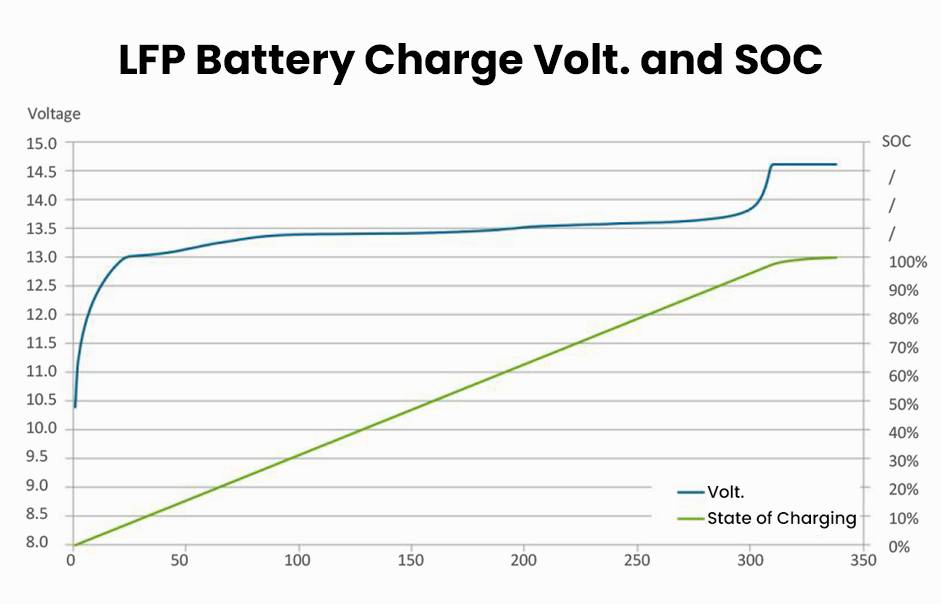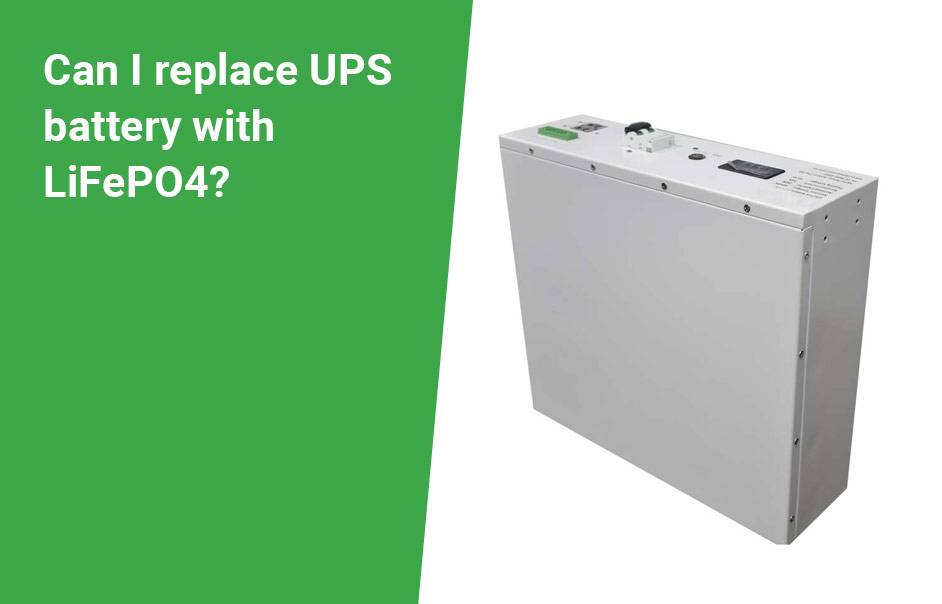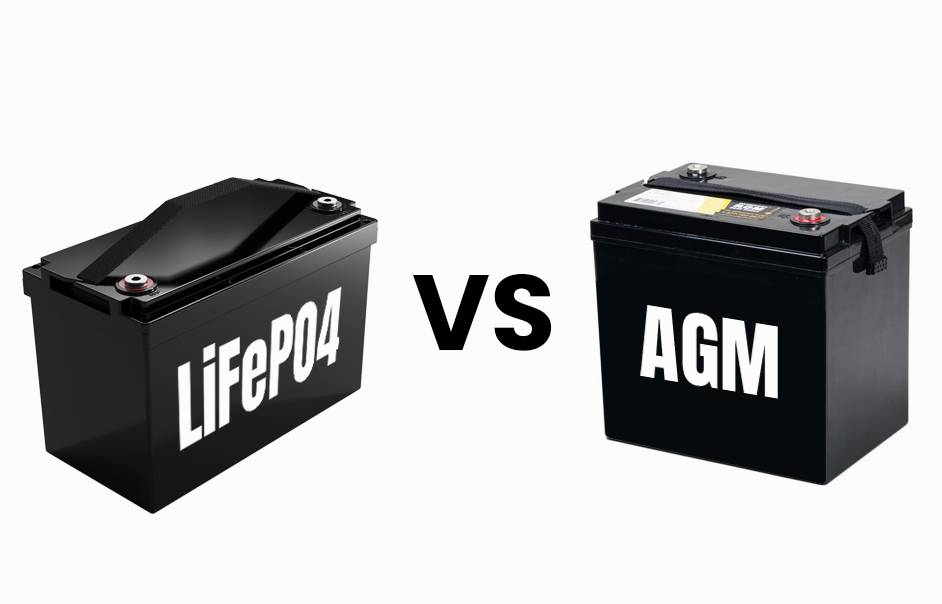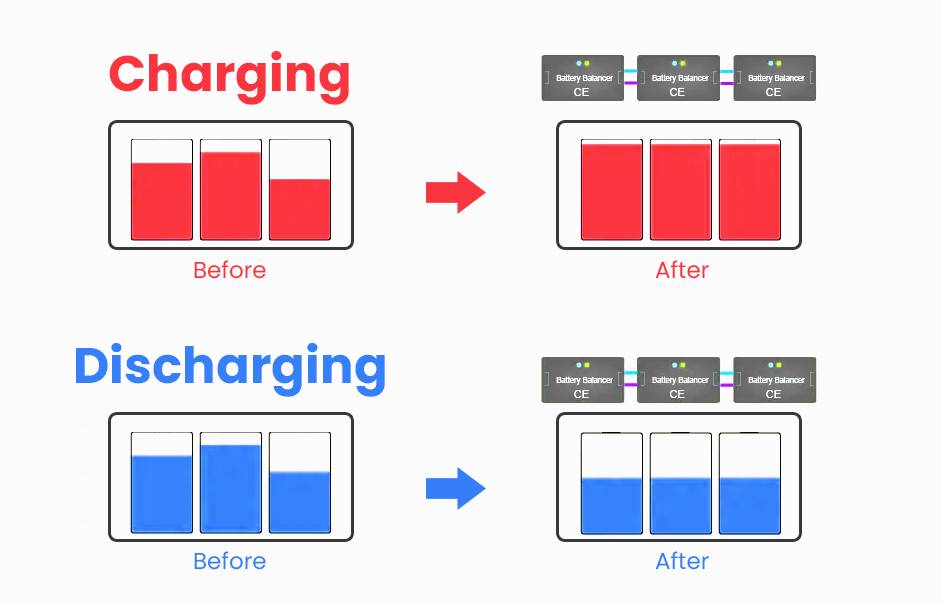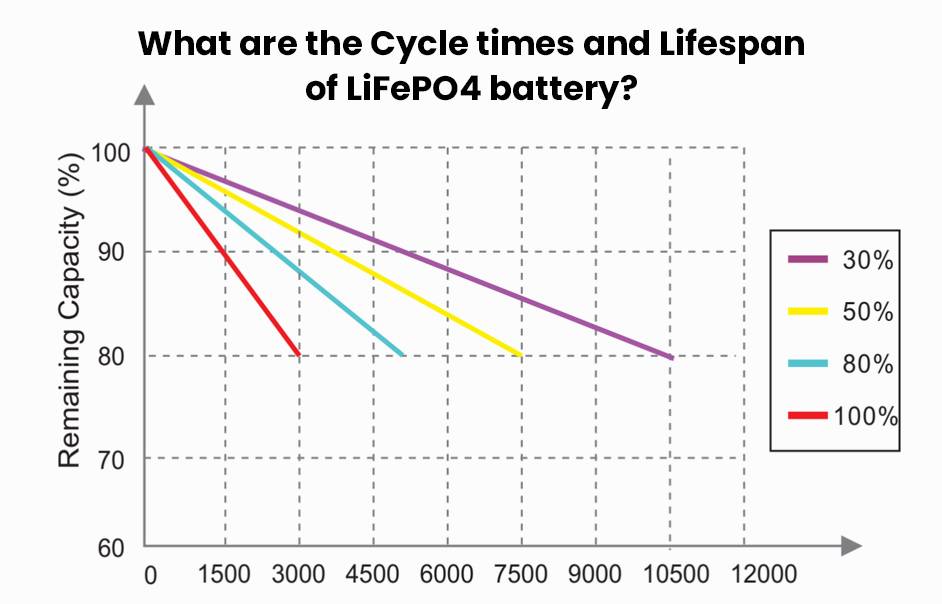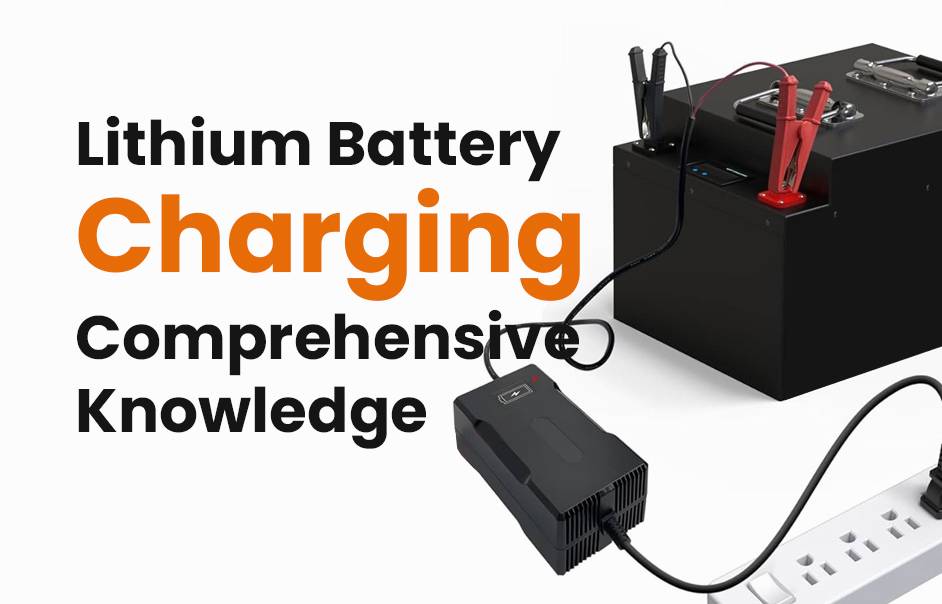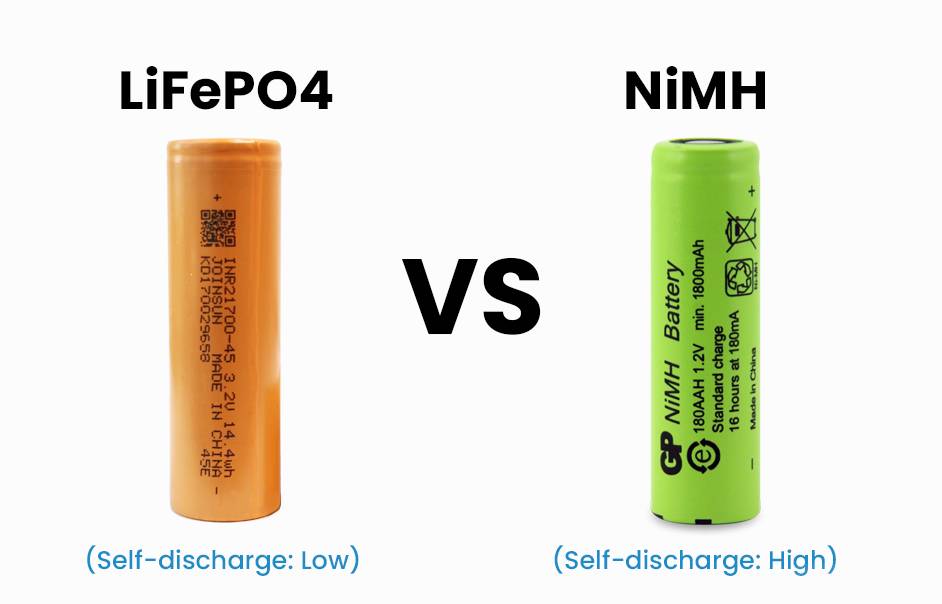Discover the game-changer in battery tech – Lithium Iron Phosphate (LiFePO4)! Tired of slow charging and short-lived performance? LiFePO4 is here to revolutionize your devices, from smartphones to electric vehicles. Join us as we unveil the unparalleled efficiency, longevity, and reliability of LiFePO4 batteries. Learn the charging process to maximize their potential. Get ready for an electrifying journey into the world of LiFePO4 – it’s time to charge up like never before!
Benefits of LiFePO4 Batteries
Unlock the power of Lithium Iron Phosphate (LiFePO4) batteries! Here’s why they stand out:
- Extended Lifespan: LiFePO4 batteries outlast other lithium-ion types, providing long-term reliability and cost-effectiveness.
- Superior Thermal Stability: Enjoy enhanced safety with reduced risks of overheating or fires compared to traditional lithium-ion batteries.
- High Discharge Rate: Ideal for high-drain devices, LiFePO4 batteries deliver power swiftly, perfect for quick bursts of energy.
- Impressive Energy Density: Experience compact designs and reduced weight, thanks to LiFePO4 batteries’ remarkable energy density.
- Eco-Friendly: Free from toxic materials like lead or cadmium, LiFePO4 batteries contribute to reducing electronic waste pollution.
- Low Self-Discharge Rates: Retain charge for extended periods without frequent recharging, particularly beneficial for idle periods.
In conclusion, LiFePO4 batteries are a smart investment, offering reliability, safety, and enhanced performance. Explore their applications in renewable energy systems, electric vehicles, emergency backup power supplies, marine vessels, and more. Elevate your power solution with LiFePO4 – the sustainable choice!

Understanding the Charging Process
Unlock the secrets of charging LiFePO4 batteries with this simple guide:
- Specific Charging Algorithm: LiFePO4 batteries differ from others, requiring a tailored charging algorithm for optimal performance.
- Distinct Voltage Thresholds: Understand the unique voltage thresholds and characteristics of LiFePO4 batteries compared to lead-acid or lithium-ion batteries.
- Multiple Charging Stages: The process includes bulk charging for rapid replenishment, absorption charging for gradual tapering off, and float charging to compensate for self-discharge.
- Dedicated LiFePO4 Charger: Ensure you use a charger specifically designed for LiFePO4 batteries, delivering precise voltage and current levels for each charging stage.
- Avoid Overcharging: Never exceed recommended charge parameters to prevent reduced performance or potential damage. Follow manufacturer guidelines diligently.
Mastering the LiFePO4 charging process guarantees optimal battery performance. Stay informed, use the right charger, and follow guidelines for a seamless charging experience!
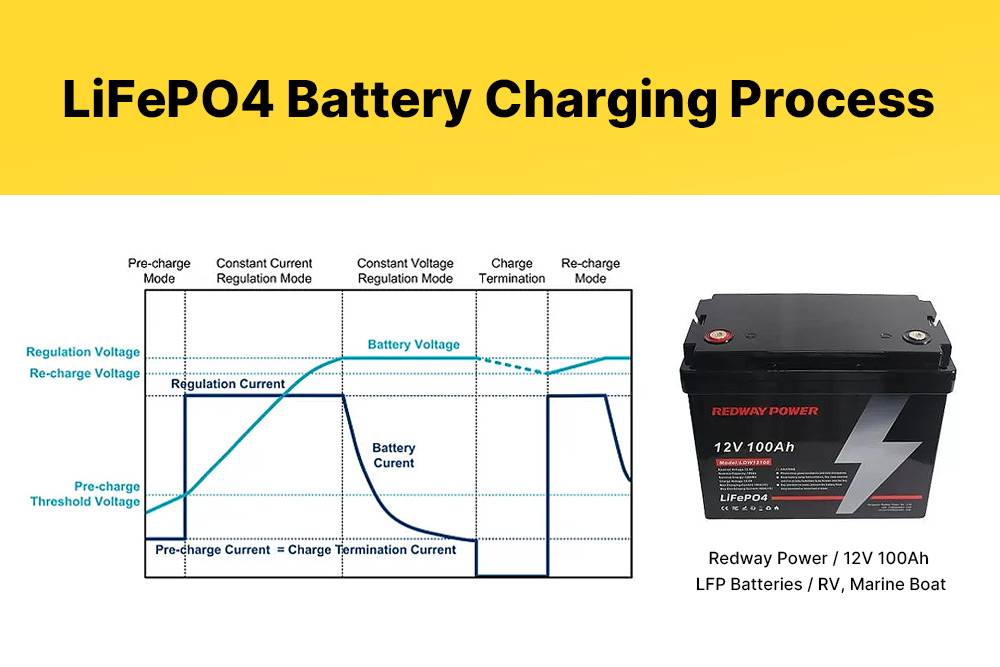
Step-by-Step Guide to Charging a LiFePO4 Battery
Charge your LiFePO4 battery like a pro with these easy steps:
- Pre-Charging Preparations:
- Gather necessary equipment and clear workspace.
- Ensure charger compatibility with LiFePO4 batteries.
- Wear safety gear like gloves and goggles.
- Connecting the Charger:
- Connect charger to power source and turn it off.
- Identify positive (+) and negative (-) terminals on battery.
- Connect charger to respective terminals using appropriate connectors.
- Setting Charge Parameters:
- Set charge parameters per manufacturer’s recommendations.
- Choose correct voltage and current settings on charger.
- Avoid exceeding recommended values to prevent damage.
- Monitoring the Charging Process:
- Turn on charger and closely monitor progress.
- Note charging duration for future planning.
- Patience is key; avoid interruptions for efficient charging.
Important Tips:
- Never overcharge or undercharge LiFePO4 batteries.
- Protect from extreme temperatures.
- Regularly inspect for damage.
- Store in a cool, dry place.
- Follow proper disposal methods.
Remember, check manufacturer guidelines for specific model requirements.
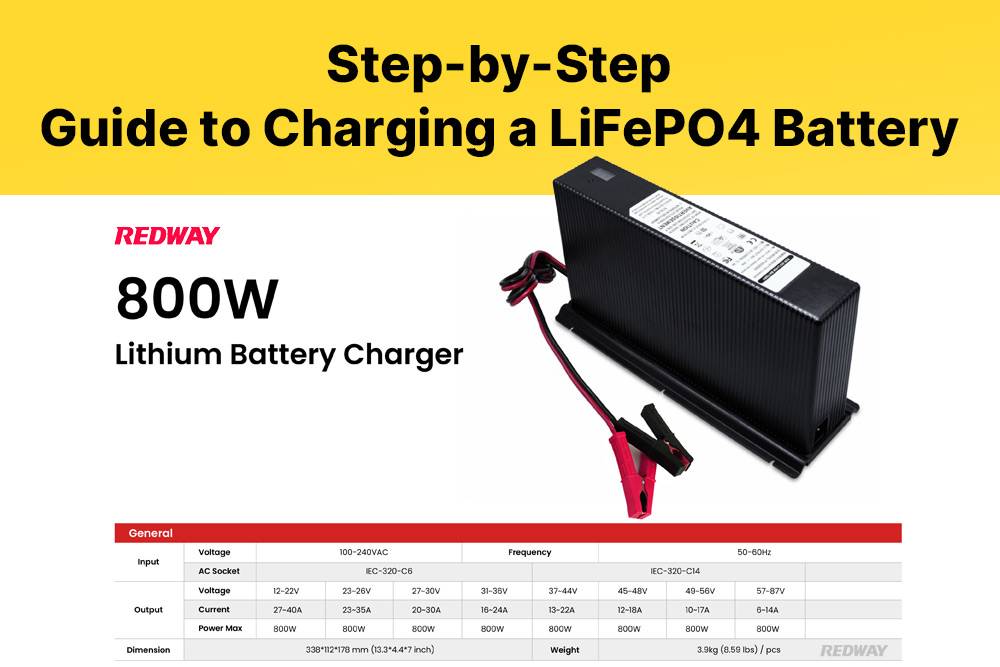
A. Pre-Charging Preparations
Prepare for a successful and safe LiFePO4 battery charging experience with these essential steps:
- Inspect for Damage:
- Check the battery for visible damage or leaks.
- Consult professionals if any issues are detected.
- Ventilated Workspace:
- Charge in a well-ventilated area to handle potential gases.
- Prioritize safety throughout the process.
- Choose the Right Charger:
- Ensure compatibility with LiFePO4 batteries.
- Double-check charger specifications before use.
- Read Manufacturer’s Instructions:
- Understand both charger and battery instructions.
- Avoid confusion and mistakes during charging.
- Gather Tools and Equipment:
- Collect all necessary tools for connecting the charger.
- Be prepared to prevent interruptions during charging.
By following these preparations, you pave the way for a smooth and safe LiFePO4 battery charging process. Safety first!
B. Connecting the Charger
Ensure a safe and effective charging process by following these key steps:
- Terminal Identification:
- Locate the positive (+) and negative (-) terminals on both the battery and charger.
- Match terminals correctly to prevent damage.
- Secure Cable Connection:
- Connect charger cables securely to corresponding battery terminals.
- Avoid overtightening to prevent damage.
- Check for Safety:
- Double-check for loose connections or exposed wires that may pose a safety risk.
- Prioritize safety throughout the process.
- Smart Charger Features:
- If using a smart charger, understand additional features like LED indicators or digital screens.
- Monitor the charging progress effectively.
- Refer to Manufacturer Guidelines:
- LiFePO4 batteries have specific voltage requirements; consult the manual or guidelines.
- Ensure optimal charging performance.
By meticulously connecting the charger to your LiFePO4 battery, you contribute to a smooth, safe, and efficient charging experience, maximizing the battery’s overall performance and lifespan.
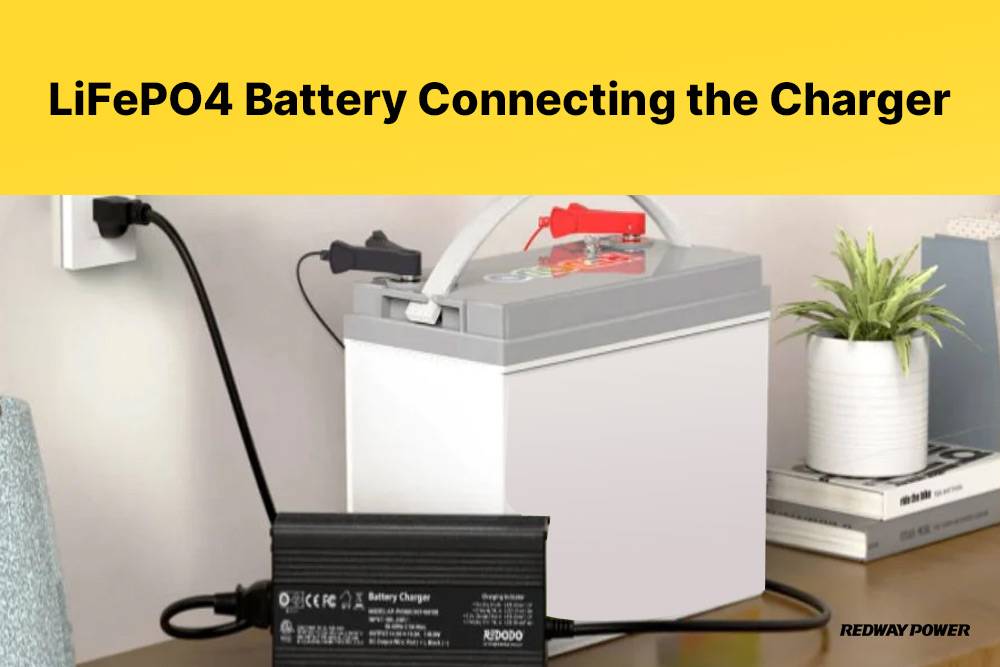
C. Setting the Charge Parameters
Ensure a safe and efficient charging process by following these crucial steps:
- Charging Voltage:
- Refer to the manufacturer’s recommendations for your LiFePO4 battery.
- Typically, the charging voltage range is between 3.6V and 3.8V per cell.
- Charging Current:
- Consult manufacturer guidelines for the appropriate charging current.
- Choose a lower current for a gentler, longer charge or a higher current for a faster charge.
- Additional Parameters (if applicable):
- Some chargers offer features like temperature compensation or maximum charging time.
- Utilize these features to optimize battery performance and lifespan.
- Prevent Overcharging or Undercharging:
- Properly set charge parameters to avoid reduced capacity or potential damage.
- Ensure parameters align with manufacturer specifications.
- Familiarize with Charger Settings:
- Take time to understand your charger’s settings before starting the charging process.
- Proper configuration based on your LiFePO4 battery requirements is essential.
By meticulously setting the charge parameters, you contribute to maintaining optimal battery health, preventing potential issues, and ensuring a safe and effective charging experience for your LiFePO4 battery.
D. Monitoring the Charging Process
Closely observe the charging process to ensure optimal performance and address any potential issues:
- Utilize Charger Display:
- Check the charger’s display or monitoring system for real-time information.
- Monitor voltage, current, and temperature readings during the charging process.
- Avoid Leaving Unattended:
- Stay present while the battery is charging.
- Regularly inspect for signs of overheating or abnormal behavior.
- Act on Unusual Observations:
- If you notice excessive heat or unusual odors, immediately disconnect the battery.
- Consult with a professional to address any abnormalities.
- Use a Multimeter for Voltage Checks:
- Periodically measure voltage levels with a multimeter.
- Ensure the battery is accurately reaching its desired state of charge.
- Practice Patience:
- LiFePO4 batteries may have longer charging times due to their chemistry.
- Be patient and allow the battery to charge thoroughly.
Active monitoring at each stage guarantees a safe and effective charging experience, promoting optimal performance and extending the longevity of your LiFePO4 battery!
Important Tips for Charging and Maintaining LiFePO4 Batteries
Charging and maintaining LiFePO4 batteries demand attention to detail and adherence to specific guidelines. Follow this recap for a safe and efficient charging process:
- Preparation is Key:
- Check battery voltage and ensure a suitable charging environment.
- Wear appropriate safety gear, and read manufacturer instructions.
- Correct Connection:
- Connect the charger with correct polarity, securing all connections tightly.
- Set Charge Parameters:
- Follow manufacturer guidelines for charging voltage and current settings.
- Avoid overcharging or undercharging to preserve battery health.
- Monitor Regularly:
- Keep a close eye on battery temperature and voltage throughout charging.
- Identify and address any abnormalities or warning signs promptly.
- Maintenance Tips:
- Avoid deep discharges whenever possible.
- Store batteries in a cool, dry place during periods of non-use.
- Conduct regular capacity tests to assess battery health.
- Prioritize Safety:
- Safety is paramount; consult professionals if uncertainties arise.
- Refer to manufacturer guidelines for assistance during any difficulties.
By incorporating these practices into your routine, you can extend the lifespan of LiFePO4 batteries, ensuring prolonged and efficient performance. Safety first!
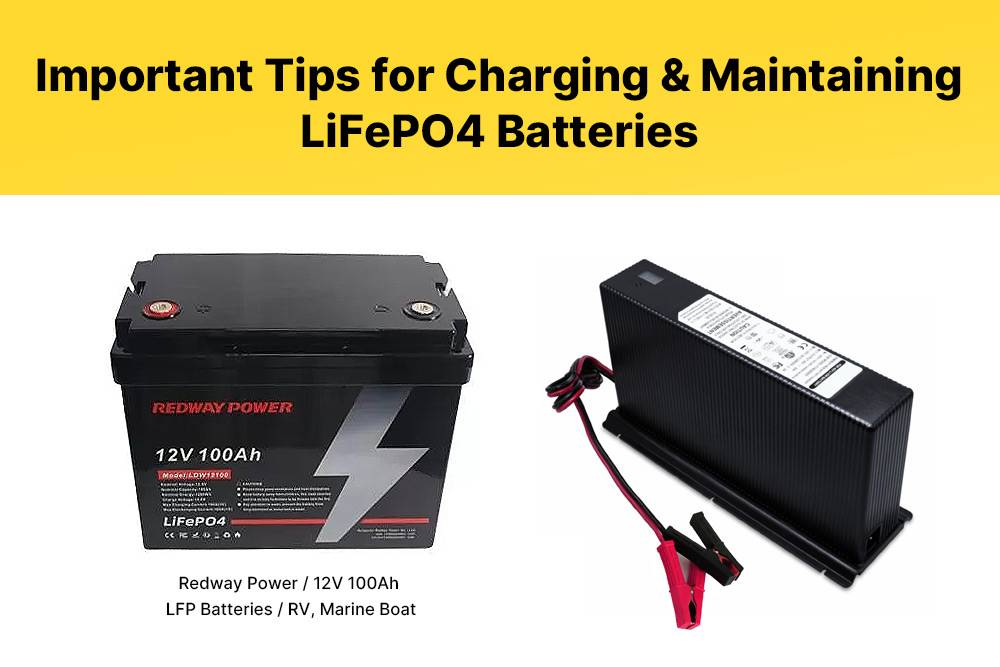
Can i charge a lithium battery with a normal charger?
As the transition from lead-acid batteries to lithium batteries accelerates, some individuals have switched from lead-acid battery electric vehicles to lithium-ion battery electric vehicles. However, it’s crucial to note that charging a lithium battery with a normal charger is generally not recommended.
Lead-acid battery chargers typically operate in two-stage or three-stage charging modes, with voltage levels that are not compatible with lithium batteries. Lithium batteries come in various types with different performance characteristics and battery protection parameters. Therefore, there are no universal chargers for lithium batteries like those for lead-acid batteries. Lithium batteries usually come with special chargers from the factory to ensure their protection.
Lead-acid battery chargers often increase the charging voltage by around 5% during constant current charging to overcome the battery’s large internal resistance. This means that using the same voltage charger for a lithium-ion battery can result in higher voltage, which is detrimental to the lithium-ion battery’s efficiency and lifespan.
Moreover, many lead-acid chargers include desulfation and equalization stages that pulse high voltages into the battery, which is essential for lead-acid batteries but harmful to lithium-ion batteries like LiFePO4. These high voltages can reduce the life of lithium-ion cells or cause irreversible damage.
Additionally, some lead-acid chargers have automatic equalization stages that cannot be turned off. These stages may cause lithium-ion batteries with internal battery management systems (BMS) to disconnect at high voltages, leading to poor charge performance or prolonged charging times.
In summary, standard battery chargers are not suitable for charging lithium-ion batteries optimally. It’s recommended to use chargers specifically designed for lithium batteries to ensure safe and efficient charging.
To maximize the lifespan of lithium batteries, it’s important to adopt certain habits and practices:
- Frequent Charging and Discharging: Regularly charge and discharge the lithium battery. Develop the habit of charging electric vehicles after using around 80% of the battery capacity, rather than waiting for it to completely drain.
- Avoid Long-Term Storage: Lithium batteries should not be stored for extended periods without use. If the battery will be unused for a while, it’s recommended to charge it fully at least once a month.
- Proper Charging Conditions: When charging a rechargeable battery, ensure the electric door lock is closed, and avoid turning the battery upside down. Charge the battery fully in one session rather than multiple partial charges.
- Use a Matching Charger: Always use a charger specifically designed for lithium batteries. The technical requirements for lithium battery chargers differ from those of other battery types, so using a dedicated charger helps prolong battery life and prevents safety risks.
- Avoid Deep Discharge: When the battery is depleted, turn off the power supply to the device. Using the battery until it completely dies can lead to significant power loss and reduce its lifespan.
- Charging Indicator: When charging a lithium battery, it’s advisable not to stop charging immediately once the charging indicator shows that the battery is fully charged. Give it a little extra time to ensure a complete charge cycle.
By following these guidelines, you can help ensure the longevity and safety of your lithium batteries, particularly in electric vehicles and other applications.

